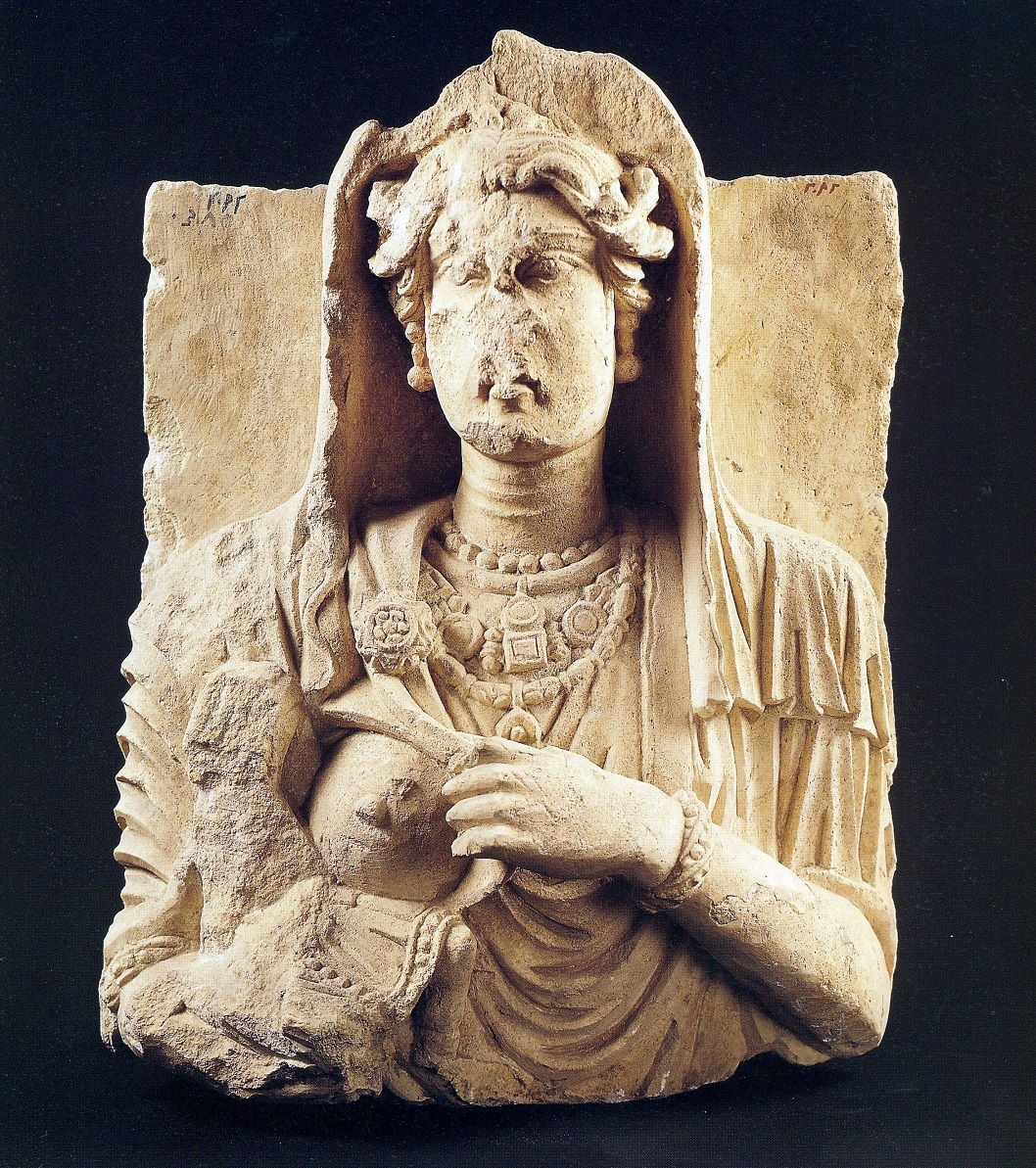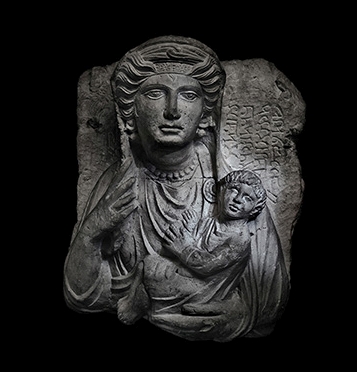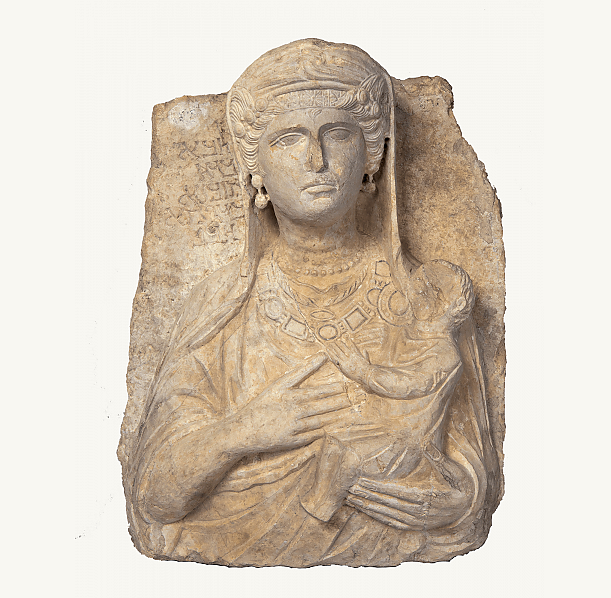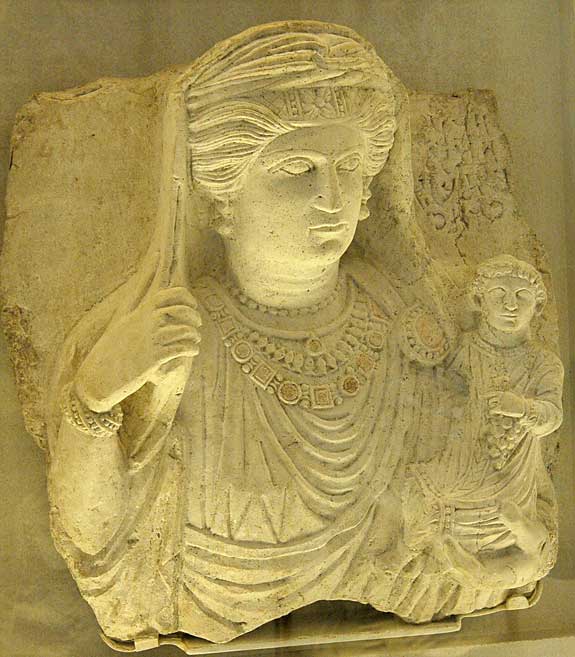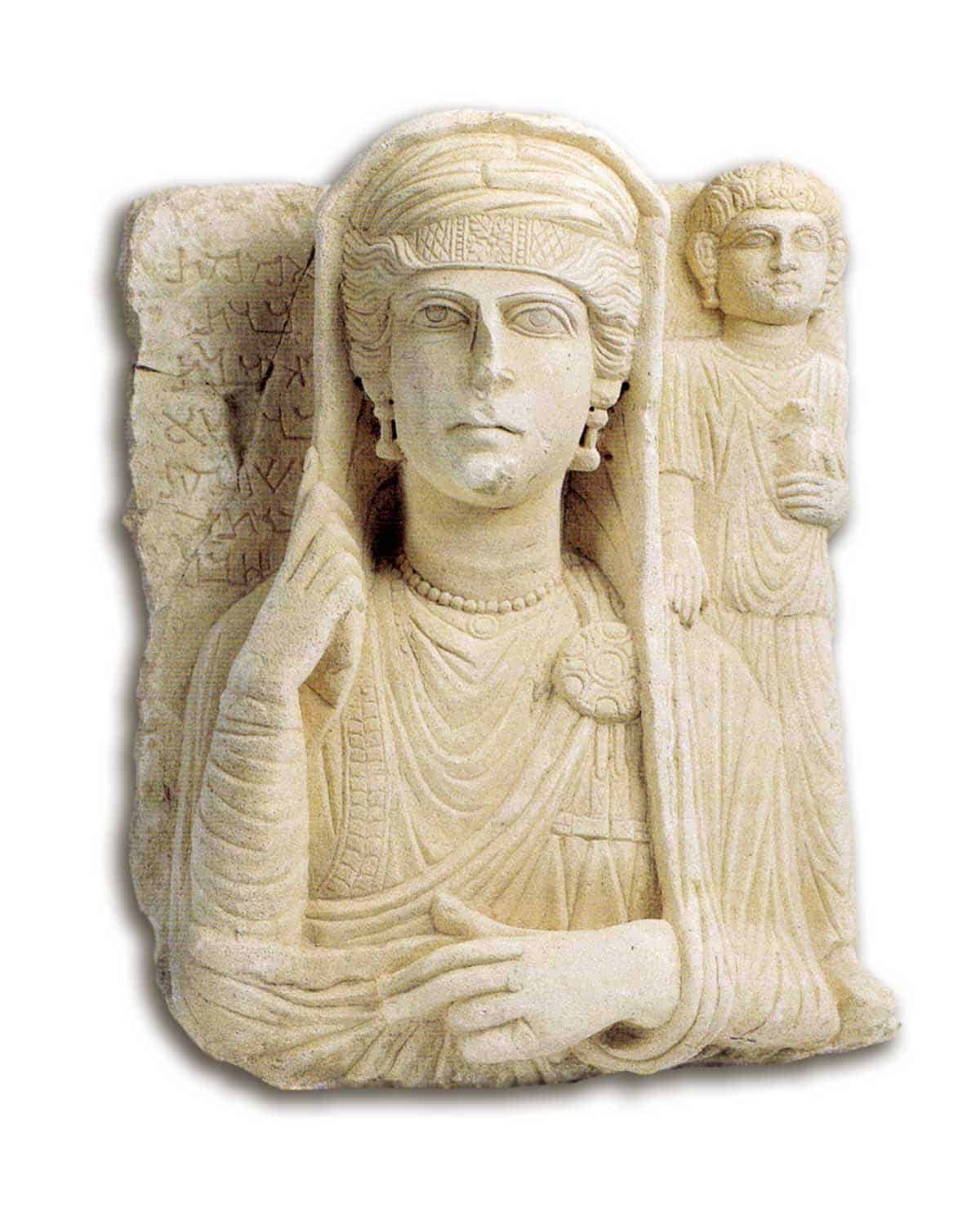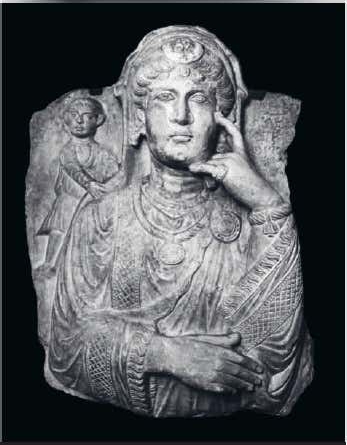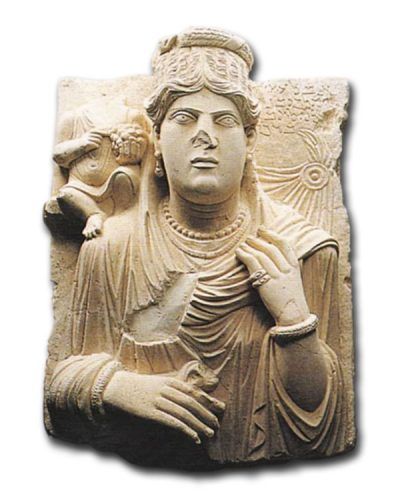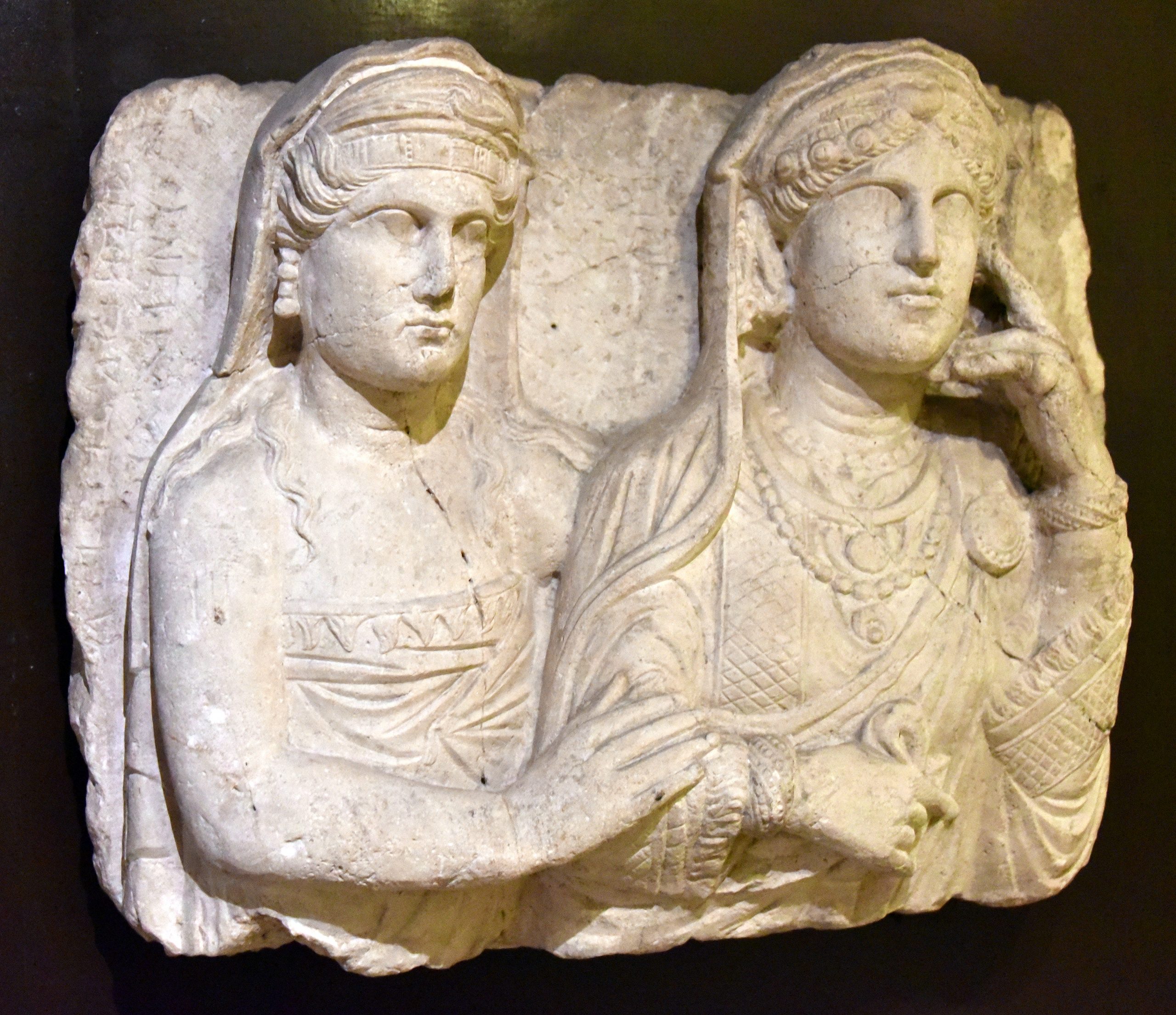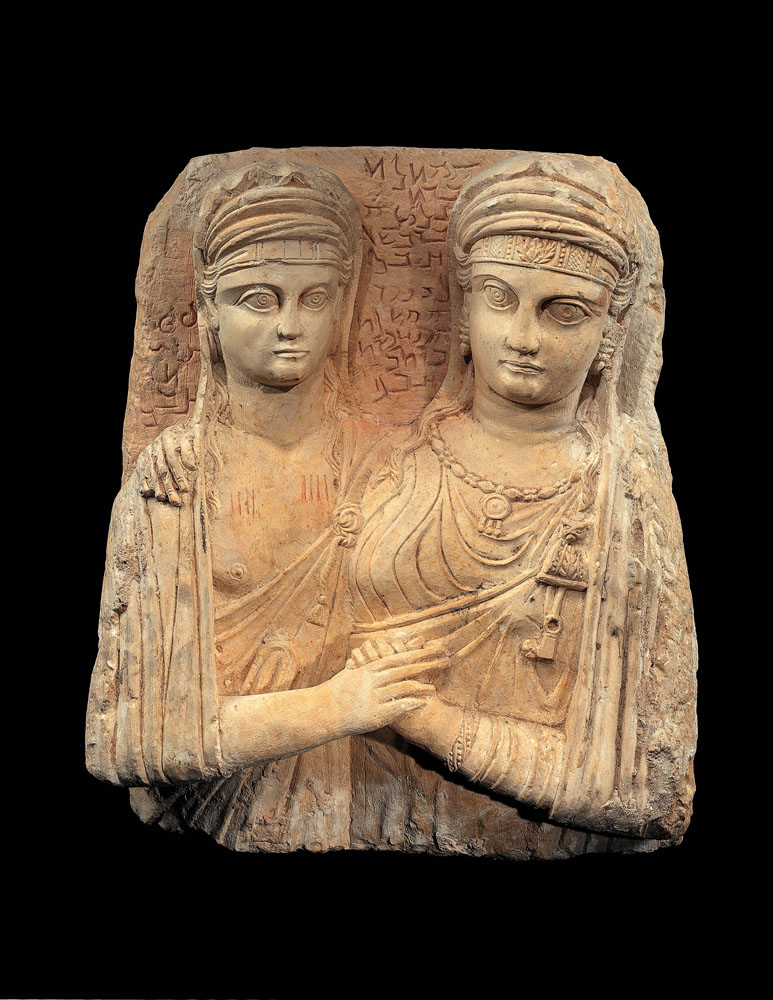
Scars [?], the Herakles Knot, necklace with a round medallion with the chain pendants; triangular brooch with a lion's head and a key.
Palmyran Limestone Funerary Plaque of a Woman with her Mother from the Phoenix Art gallery
https://phoenixancientart.com/work-of-art/palmyran-limestone-funerary-plaque-of-a-woman-with-her-mother/
19103
Period : First half of the 2nd Century A.D.
Material: Limestone
Dimensions: 55 cm x 42 cm
Price: USD 90,000
Provenance:
Ex-private collection, Lebanon, collected in the 1960’s.
“This slab – whose rectangular shape is well formed and in a perfect state of preservation with many traces of red paint and some traces of black – represents the bust of an adult woman richly clothed and bejeweled, accompanied by a second woman with a bare torso. Their faces, with strongly idealized features, do not display personal character and seem to suggest a vaguely young age: as often is the case in Palmyran sculpture, these are not individual portraits in the proper sense of the word, even if the inscription indicates the name and even the rank of the people represented.
The woman to the right on the plaque is designated by her larger size and by her dress as the more important of the two: she is almost certainly the deceased. She wears a finely pleated and draped tunic and a cloak that falls diagonally across her chest; a large turban and a veil, the fabric of which descends onto the shoulders and arms, covers her head. The jewelry consists of a diadem with a floral motif, a pair of earrings in the shape of grape clusters, a pearl necklace with a large central pendant and a bracelet. The presence of the key suspended from her left shoulder designates her as the matrona, the role that this woman held within her household.
Like on other Palmyran funerary plaques, the deceased is accompanied by a member of the same family (spouse, children, brothers, sisters): in this case, the figure to the left is a secondary image to the first and differs in its smaller size and by the fact that she does not wear a tunic (her right breast is clearly visible) nor jewelry; the vertical lines carved on her chest and painted red are probably wounds. A plaque in Copenhagen, later but typologically identical to this one, reveals to us the identity of the companion: she seems to be the mother of the young woman, represented in the role of a mourner as indicated by the nudity of the torso and especially by the wounds that she has inflicted upon herself during the funerary rites. The close parental mother-daughter connection is also highlighted by the intimate and involved attitudes of the two women, who not only hold hands, but drape their arms over each other’s shoulders.
Stylistically, this plaque can be attributed to the final phases of the first group of Palmyran sculpture and dates to the first half of the 2nd century A.D.; the type of earrings, the schematic folds of the fabric, the shape of the eyes (two concentric circles for the iris and the pupil) confirm this dating.
Bibliography
COLLEDGE M.A.R., The Art of Palmyra, London, 1976.
PLOUG G., Catalogue of the Palmyrene Sculptures, Ny Carlsberg Glyptotek, Copenhagen, 1995, pp. 210-212, n. 86 (iconography) ; pp. 101-103, n. 29 (style and chronology).
SADURSKA A. – BOUNNI A., Les sculptures funéraires de Palmyre (Rivista di archeologia, Suppl. 13), Rome, 1992.”

